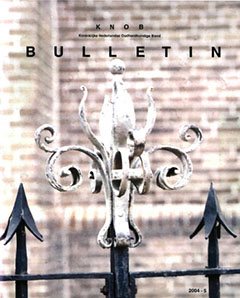Indexering ESCI / Scopus


Toelichting op het themanummer: De analyse van het bouwproces (D.J. de Vries). Mascha van Damme: Modern versus Traditioneel. Het materiaalgebruik van de bouwmeesters Cuypers en Tepe. Hugo Landheer: De restauratie van kasteel De Haar: van droom tot obsessie. Hans van den Heuvel: Manhattan aan de Eem. De ondergang van een stedenbouwkundig project uit 1989.
In the second half of the nineteenth century the mechanized production of building components expanded enormously; there were also drastic innovations in the manufacturing of traditional materials such as brick, mortar, glass, roof tiles and paint materials. Besides, technical progress resulted in the development of a wide range of materials that had never been used before, such as wood cement, concrete, aluminium, asphalt, cast iron, steel and zinc. It is important to make a distinction between on the one hand new materials and on the other hand old materials that were produced or...
In this article the financing of the building process of castle De Haar in the period between 1891 and 1897 is sketched. This period was important because from the various documents it appears that the plans for the restoration became final in those years. From 1895 the object of the work was to enable the baron and baroness to invite their first guests at their new country estate by the summer of 1897.
This period was also important because the baron was engaged in a 'war on two fronts'. Not only did he wish to restore his ancestral domain, but also the ruins of castle De Haar....
Amersfoort is a town with roots in the Middle Ages. In the late nineteenth and late twentieth century the town was connected to the national railway network and the European motorway network respectively. In 1982 it became a town designated for expansion.
The number of inhabitants had to be doubled to 120,000. For the municipal authorities this was an immense task. Additional problems were the historical town centre within a stone's throw from the area covered by the plan, and opposite the railway an area with run-down (chemical) industry and considerable soil pollution.
...

open access mogelijk gemaakt door Stichting OpenAccess
